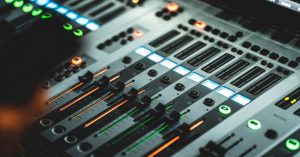
For people looking for a customized and excellent sound experience, DIY audio is a guiding light in a world where mass-produced audio equipment rules the scene.
DIY audio, is a broad term that includes everything from constructing speakers and amplifiers to personalizing audio gear. This piece explores the exciting realm of DIY audio, including its advantages, necessary elements, popular projects, and beginner’s advice.
Understanding DIY Audio
The desire for unique sound experiences and a closer bond with audio equipment has propelled the DIY audio movement in recent years. Instead of settling for prepared options, fans set out to create custom audio systems that suit their tastes and style.
Benefits of DIY Audio
Customization is one of DIY audio’s main benefits. You have complete control over aspects like sound character, appearance, and component quality when you construct your own audio equipment. With commercial items, this level of personalization is frequently not possible.
Additionally, DIY projects might be reasonably priced. High-end audio aspect can be very expensive, but diy audio can save a lot of money by finding the parts and supplies they need to produce similar, if not better, results.
Essential Components of DIY Audio
Audio Components
Any DIY audio project’s components are what give it its heart. Important elements consist of:
- Speakers: Fans may adjust frequency response, sensitivity, and power management to suit their needs by using speakers. Popular speaker types include bookshelf speakers, subwoofers, and floor-standing speakers.
- Amplifiers: Amplifiers are important to diy audio signals and power speakers. Simple headphone amplifiers to strong stereo or multichannel amplifiers are examples of diy amplifier projects.
- Cables and connections: In audio settings, maintaining signal integrity and reducing interference requires high-quality cables and connectors.
Instruments
An organized workspace is essential for DIY audio projects. For building speaker enclosures, soldering irons, multimeters, wire strippers, screwdrivers, and carpentry tools are necessary.
Information Sources
The secret to success with DIY audio is having access to trustworthy sources and knowledge. For both novices and seasoned enthusiasts, online communities, forums, and tutorial websites provide insightful advice, project plans, and troubleshooting hints.
Popular DIY Audio Projects
Speaker Design
The abundance of designs and varying degrees of complexity available make building speakers a common starting point for DIY audio projects. Enthusiasts have the option of constructing from the ground up or putting together kits that include pre-made parts for simpler assembly.
Amplifiers Tube
Audiophiles have a great following of tube amplifiers because of their warm, smooth sound. Hobbyists can customize their amplification system and explore the vacuum tube universe with DIY tube amplifier kits.
DACs and audio processors
The process of converting digital audio inputs into analog signals for playback and amplification requires the use of audio processors and digital-to-analog converters (DACs). DIY possibilities let hobbyists play around with various output stages, signal processing techniques, and DAC chipsets.
Tips for Beginners
Small Startups
Before taking on more complicated projects like full-range speakers or tube amplifiers, start with easy ones like creating a headphone amplifier or a pair of bookshelf speakers.
Do Extensive Research
Spend some time learning about the parts, layouts, and building methods. Gaining an understanding of the fundamentals of audio and electronics can help you in your DIY endeavors.
Look for Community Support
Participate in local DIY audio groups, communities, and internet forums. These platforms provide insightful information, help with debugging, and project ideas derived from group experiences.
DIY Audio for Comfort at Home

Improving Home Theater Installations
Adding DIY audio to home theater installations is a natural fit. In order to create immersive audio experiences for movie evenings and gaming sessions, enthusiasts can build custom speakers matched to their room’s acoustics and personal preferences.
Improving Audio Systems
High-fidelity (Hi-Fi) audio systems require fine tuning and high-quality parts to function properly. Building or altering amplifiers, speakers, and DACs is a common way for DIY enthusiasts to improve their Hi-Fi systems and achieve audiophile-quality sound without going over budget.
Custom Sound in Recording Studios
Personal Studio Monitors
DIY audio solutions are incredibly beneficial for recording studios, particularly when it comes to building custom studio monitors. Accurate sound monitoring during the recording, mixing, and mastering stages depends on these monitors. The performance of DIY monitors can equal or even exceed that of their commercial equivalents.
Changing Amplifiers and Microphones
Audio engineers and artists can fine-tune their recording chain for certain applications and sound qualities by doing DIY tweaks to microphones and preamps. This degree of personalization is frequently favored in settings for professional recording.
Original Music in Educational and Training Settings
Education-focused DIY Audio Kits
Both DIY hobbyists and educational institutions use DIY audio kits as teaching resources. These kits provide a deeper grasp of audio principles by teaching basic topics in electronics, audio engineering, and acoustics in an interesting and hands-on way.
Constructing Audio Projects
As part of STEM (Science, Technology, Engineering, and Mathematics) education programs, fans and students work on DIY audio projects. In addition to improving technical proficiency, building speakers, amplifiers, and electronic circuits creativity and problem-solving ability.
DIY Audio in Commercial and Professional Settings
Specific Installations
Custom audio installations are a popular choice for commercial locations looking to create distinctive atmospheres, including restaurants, pubs, and retail stores. DIY audio solutions offer affordable options without sacrificing style or sound quality.
Fixing and Maintenance
To maintain and repair their equipment, professional audio technicians and engineers often turn to DIY methods. In professional audio systems, downtime is minimized through quick troubleshooting and economical repairs made possible by an understanding of electronics and DIY procedures.
Eco-Friendly Initiative: DIY Audio
Recycling and Upcycling
DIY audio accords nicely with environmental objectives by utilizing techniques like recycling and upcycling. Old audio equipment is repurposed by enthusiasts, saving parts and cutting down on electronic waste. Environmentally conscious people and organizations are drawn to this eco-friendly strategy.
Conclusion
For audio fans, DIY audio provides a complete and engaging experience. The options are endless, ranging from building custom speakers to learning about the subtleties of tube amplifiers and digital audio processors. Adopting DIY audio allows people to build audio systems that suit their specific tastes and preferences while also gaining a greater understanding of audio technology. So embrace your inner audiophile and take off on a sonic exploration voyage with DIY audio projects that are customized to your ingenuity and imagination.

